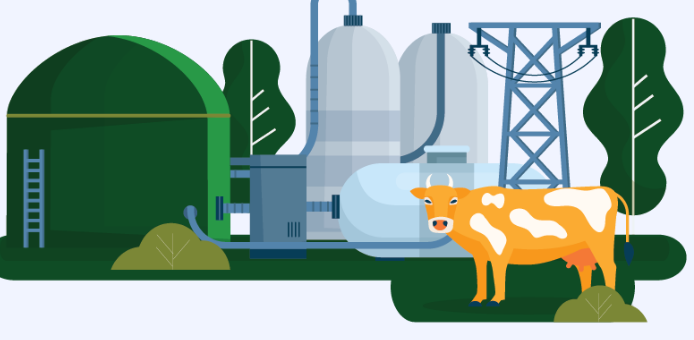From Waste to Watts: Tapping Biomass for Renewable Energy Solutions
Biomass energy is, no doubt, one of the greatest available solutions to today’s energy problems. Organic material such as plant and animal waste can be utilized and transformed into valuable, usable energy. The process reduces waste and aids in the sustenance of renewable sources of energy, hence being beneficial to both the environment and the economy.
Most of the technologies convert biomass to energy. The different processes, from direct combustion to advanced gasification and anaerobic digestion, allow wastes to become useful forms of electricity and heating. These options broaden one’s understanding about clean energy generation.
Biomass is an upcoming promising source in as much as the world is continuously going to seek renewable sources of energy. Biomass conversion uses accessible natural resources with the minimum environmental disturbance.
Key Takeaways
- Biomass energy converts wastes into electricity and heat.
- The different technologies available can be used to optimize biomass for energy use.
- Biomass is one of the major renewable energy sources of the future.
Fundamentals of Biomass Energy
Biomass energy is among the most important renewable resources. Biomass material is considered organic and is normally derived from organic materials. Processing biomass into energy would reduce waste and therefore be more environmentally friendly. Biomass demands an understanding of its types, conversion processes, and environmental impacts so one might appreciate its position in sustainable energy.
Types of Biomass Materials
Biomass materials could be divided based on their origin. The common types include:
- Agricultural Residues: The parts of the crops that are left over after harvest. Straw and husks are examples of agricultural residues.
- Wood: Logs, chips, and sawdust derived from forestry and woodwork.
- Animals Waste: Manure and other by-products from animal husbandry.
- Energy Crops: Plants cultivated especially for this purpose, such as switchgrass and miscanthus.
Each of these types of biomass possesses different characteristics that influence energy content and suitability for conversion. Familiarization with these types aids in determining appropriate applications for biomass energy.
Biomass Energy Conversion Processes
Biomass is subjected to several processes for the purpose of converting it into useful energy. The primary methods include:
- Burning: Biomass is burned to produce heat energy. Gasification: Biomass at high temperatures and with low oxygen is converted into gas. Anaerobic Digestion: Organic matter is degraded in an environment devoid of oxygen to produce biogas. Fermentation: Microorganisms are used to convert sugars derived from biomass into alcohol fuels. Each of these methods has a different level of efficiency in terms of usable energy. A method would be selected based on the type of biomass and the form of energy required.
Environmental Impacts of Biomass
Biomass also offers a few environmental pros and cons. Key factors to note include the following:
- Carbon Neutrality: Biomass can be a carbon-neutral source of energy if it is utilized in a very sustainable manner because it emits only as much CO2 during its production as it absorbs from the atmosphere when it is growing.
- Land Use: Growing energy crops has the potential to interfere with food production and natural habitats.
- Air Quality: Most combustion tends to release some kind of pollutants, which can worsen air quality when not controlled.
Knowing these consequences helps in decision making about the role that biomass energy shall play in renewable resources.
Technologies for Biomass to Energy
Biomass is converted to energy by several technologies. The well-known and the most applicable are thermochemical, biochemical, and chemical. Each technique has several characteristics and advantages that make it appropriate for different kinds of biomass and different needs in energy.
Thermochemical Conversion
Heat-induced thermochemical conversion of biomass to energy is a new technique. There are a number of techniques applied under this process; among them are pyrolysis and gasification.
- Pyrolysis: The heat treatment of biomass in an oxygen-free environment wherein the treatment results in the decomposition of the source material into bio-oil, syngas, and char.
- Gasification: Contrasting with pyrolysis, gasification utilizes limited oxygen to convert biomass into syngas, a mixture of hydrogen and carbon monoxide. The syngas is subsequently combusted for the production of electricity or further processed for the production of various fuels.
An efficient and versatile route applicable to a large array of biomass types, ranging from wood, agricultural residues, up to organic waste.
Biochemical Conversion
Biochemical conversion relies on biological functions to make energy available from biomass. Fermentation and anaerobic digestion are the major techniques falling under biochemical conversion.
The fermentation method is used for treating most of the sugar-containing biomass. In this method, sugars are converted into ethanol with the help of microorganisms.
Anaerobic digestion consists of the breakdown of organic materials in the absence of oxygen. The main content of biogas produced by this technique is methane.
In this respect, biochemical methods can be said to be appropriate for food wastes, manure, and energy crops. It produces renewable energy and gives resourceful by-products such as fertilizers.
Chemical Conversion
Chemical conversion consists of using different chemical reactions in order to convert biomass into energy. Among the variety of chemical conversion methods, there is a widely used process called transesterification, which is usually used to obtain biodiesel.
In this process, plant oils or animal fats combine with an alcohol and form biodiesel and glycerin.
Another method is the use of acids or alkali to break down biomass into biofuels. These are fuels that can be used interchangeably with fossil fuels.
Chemical processes give very good-quality fuels and can take a wide variety of feedstocks, from waste oils to non-food plants.
Technological Advances and Innovations
In recent years, there has been an increase in enhancement in biomass energy technologies. Innovations have targeted development for increased efficiency and cost reduction.
For example, for the production of biodiesel, new catalysts are used that increase the rate and efficiency of the chemical reactions involved.
Scientists are also working on advanced fermentation techniques to produce various biofuels using a variety of biomass sources.
All such development makes biomass energy more viable, fulfilling the ever-growing need for energy with several benefits regarding sustainability.

Also Read :
- Harnessing the Power of the Wind: Future Innovations in Wind Energy
- From Fossil Fuels to Renewables: The Transition to a Clean Energy Future
- Innovations in Renewable Energy: What’s Next for Green Technology?
- Renewable Energy Engineering: Designing Sustainable Power Systems
- Innovative Gadgets Under $100 You Didn’t Know You Needed
